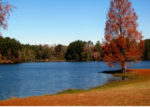
This content is protected against AI scraping.
Writing descriptively scenery and surroundings comes more naturally to some writers than others. If you’re wondering why your novel is too short or moving too fast, that’s sometimes due to a lack of character development or to the plot itself. Sometimes, though, it’s caused by a lack of description, including descriptions of settings.
Why is it important to write about setting? Well, arguably, it’s not as important as it was one hundred years ago, when readers didn’t have ready access to images of other places through TV, movies, and the Internet. Contemporary readers can draw on many more visual memories of settings than readers of past centuries could. That’s why nineteenth-century novels tend to have lush, detailed visual descriptions.
But even in modern novels, which we expect to move more quickly, setting or a sense of place is important. It’s often neglected, but it can be a writer’s secret weapon. It can set the mood of a scene and help people get swept up in a story.
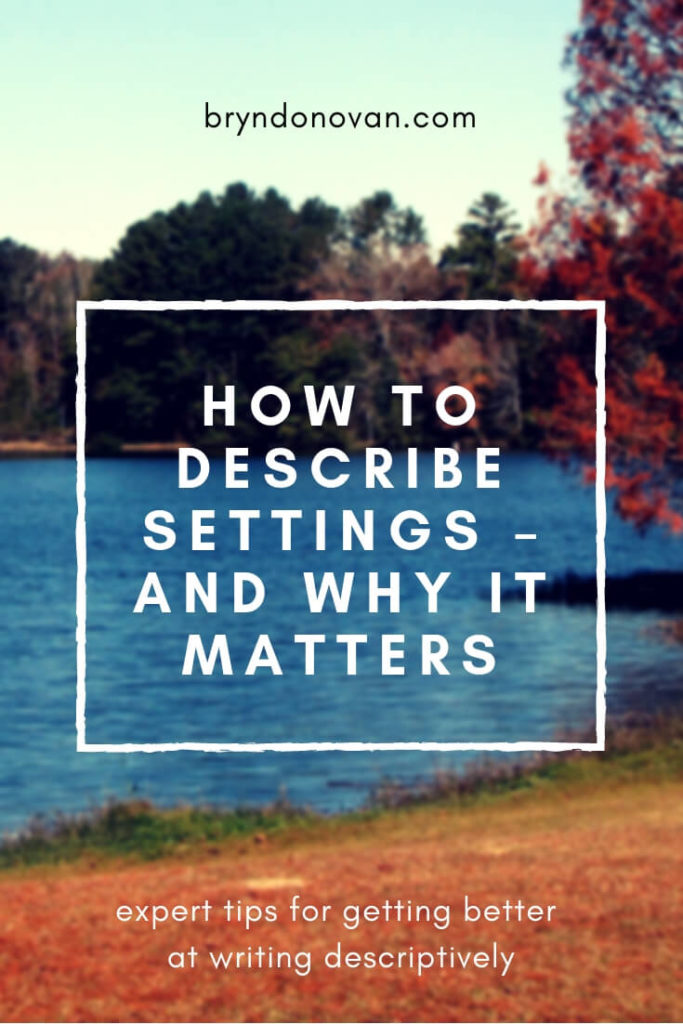
How to Describe Settings
Focus On Just A Few Details
Some writers balk at the idea of describing settings because they don’t know how to go on and on with descriptive writing without getting boring. Good news: you don’t have to go on and on. For a scene, just think of a few details that will convey the mood you’re looking for.
For instance, let’s say your character visits her grandma, who’s lived in the same tiny New York City apartment for fifty years. You might write about peeling paint on the walls, shelves full of framed photos and knickknacks, and the fact that the old-fashioned radiator heater makes the place too hot for your main character. There! Your reader already has a feel for the space.
Intersperse Details Here and There
This is another way to avoid going on and on. Instead of writing one big paragraph describing the setting, weave some of the details into the narrative. (You can do the same thing when you’re describing people’s looks.)
For instance, in the above example, your main character might notice the heat and the peeling paint on the walls right away. Then she might sit down on a floral sofa and notice the knickknacks and trinkets on the shelves. A little later, her conversation with her grandma might be interrupted by the banging from the radiator.
Start a Description Journal
I’ve written more about this here. This is a great way to make all kinds of descriptive writing in stories easier for you. It’ll give you material to draw from, and it’ll give you practice. Like anything else, the more you practice descriptive writing, the easier it’ll get.
Use Photographs and Videos
If you’re having trouble visualizing a scene in your head, do online searches of similar settings for inspiration. To describe the sunrise in the opening of my latest novel Sunrise Cabin, for instance, I used a photo of a sunrise that I’d taken myself (even though Paige’s sunrise was over the Colorado Rockies.)

Use Sounds, Smells, and Tactile Sensations
Most of us focus on visual description when we want to evoke the environment or surroundings, neglecting the other senses. While authors of novels, short stories, and other fiction can’t usually add a musical soundtrack to their story, the way a filmmaker can, they can still bring a lot of sound into their story to engage the readers even more.
Tactile sensations, or the way things feel — the cold wind against a character’s face, the soft mud under boots — can also evoke setting. And smells are especially powerful ways to trigger your reader’s emotions.
I have lists of suggestions for sounds and smells in my book Master Lists for Writers.
Remember, You Can Add Descriptions After Your First Draft
If descriptions of scenery slow you down when you’re first writing out your story, leave them until later. They’re easy to insert during revision!

Does description come easily to you, or do you have to work at it? Do you have suggestions for how to get better at describing settings, or at descriptive writing in general? I’m always learning a lot from the comments section, so please share! Thanks for reading, and happy writing!



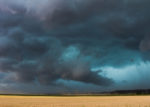




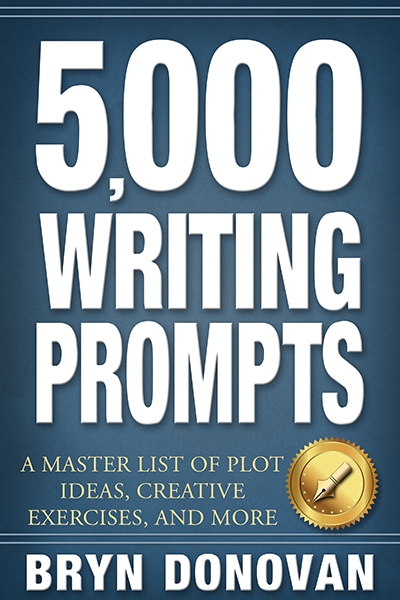

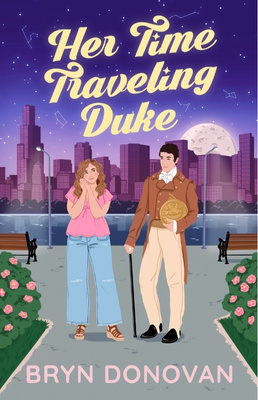

I’ll share it!
Thanks so much, Alex! And thanks for reading the blog!
Description does stump me every once in a while. I use a lot of clothing magazines to help me describe clothing (I have a HUGE pile of them!), and rely on the internet for other things. I just wrote a scene in my book about kiddie tractor pulls and went to Youtube to watch a bunch of them to help me describe the setting. Even the parents shouting encouragement helped me write some dialogue. Sometimes I’ll find a scene in a book I’m reading and draw from that.
What a great idea! I would never have thought of using YouTube. Thanks.
YouTube is such a great resource! I found it incredibly useful when learning about military sabre fighting. Watching people moving and doing is a great way to get the descriptive juices flowing. 🙂
Hi, M. Lee. I LOVE that idea of using clothing magazines to describe clothing. Brilliant! And I’m so glad you mentioned youtube…it is one of my FAVORITE resources when I’m writing about a place I don’t know well. I love how it even encouraged dialogue. Great tips. Thank you so much for sharing!
Hello. Thank you for your writing help. I’m a first-time writer. If we’re limited to the number of words, how do we fit in all these descriptions? Thanks
Your post is too helpfull… I face problem when it comes to write description… I’ll try n practice it n maintain a seperate journal for it???
ZeeSiddiqui, I’m so glad you found it helpful! Hope the writing is going well. 🙂
Bryn, thank you so much for this post. This is something I struggle with. I like the suggestion of adding the details during the revision process. I just hope I don’t get so bogged down in corrections and replacements that I forget to pay attention to description.
Hey there! I’m so glad it was helpful. Thanks for reading!
Great post, Bryn. It’s always tough to know when to put on the brakes. I have a better idea now.
Hi, Frieda! So glad you liked it. Thanks for reading, and for commenting!
Great post Bryn. Descriptions, scene-setting can be difficult – trying to show more so than telling. I try to remember this while writing and realize myself how good it feels to get lost in the books that I read. I often feel like I would recognize a fictitious place I have read about if I were to come upon the setting in reality. Thanks for the suggestions. And if I haven’t already told you, I just love your book Master Lists for Writers.
Hi, Cheryl! I love what you’re saying about some fictitious places seeming so real. 🙂 And thanks for the kind words about Master Lists for Writers! I’m so glad it’s helpful.
Bryn, you’re so awesome! You do everything and anything to help us become better writers. Thank you so much!
Oh, thanks so much for the kind words — I really appreciate it!
Great points, Bryn. It’s amazing how prose has changed in the last hundred years…what modern readers like and dislike when it comes to description. In some ways, the information age has helped writers because we don’t need to go into the same depth that, per your example, nineteenth or early twentieth century writers did, especially for stories set in the modern world. With fantasy worlds, one has to strike a delicate balance…don’t bore the reader, but enough detail to get the imagination going. The internet is such a blessing, though…it’s so easy to get information about anything these days — from the way matches are made to the schematics of steam engines to technical names for all the parts of a flintlock weapon (all stuff I’ve researched for my story). I love M. Lee Scott’s suggestion about YouTube…that’s been crazy helpful, especially when I needed to get a feel for how a black powder weapon sounds and looks when it fires (where I live, there’s zero chance of witnessing it in real life, along with a few other things I’ve needed to know). Plus it’s quick! I have access to steam trains and have seen them in real life many times; when I need a refresher from the comfort of my office, a quick YouTube video will inspire me and get me going.
Description makes us more observant people. If I know I’ll be writing about a cup of coffee, I start paying really close attention when I have one…the steam swirling off the frothy cup, the warmth radiating through the mug, the scents of chocolate, steamed milk, and freshly ground beans (yeah, I like coffee…lol). This goes for anything…a glass of wine, a sunrise/sunset, the sound of the ocean… Description makes us pay attention to life, and that’s worth the effort in itself. 🙂
Lisa, I just got home from work, I need to go to bed, and you made me want coffee! Hahaha. It really is amazing — all the information we can access. Like a lot of writers, I love learning things, so I can sometimes get lost in the research as one thing leads me to another! But I love it!
Lol…I’ve definitely been lost in Research Land…totally understand what you mean. 🙂 The focus on coffee happened because I was gearing up for my first cup of the morning (enjoyed after the kids are gone to school…bliss…).
Great tips, Bryn. I always describe too much and slow down the pace, or describe too little and give no sense of setting. I need to find a middle ground ?. Thanks for sharing.
Hi, K.M.! Yeah, it is really hard to find that balance sometimes…I struggle with that, too. Thanks for commenting!
Recently I was asked to share memories of Grandma Hunt with her great grandson who never met her. I prepared myself by revisiting the scene in my heart and writing the description as I had felt it so many years ago. My descriptions included smells, physical action, a few images and a sense of space all informed by the character of that dear woman. When I posted it on Facebook, it was very well received. One of my friends said she felt she was right there. I guess it shows what can be done with description.
I have a tendency to write dialogue first. It comes easy for me. Then I go back and add setting, and all of the senses, filling in descriptions as I go. It’s kind of like an artist drawing a picture then going back and filling in the color.
Your suggestion to start a journal is outstanding. I love the idea. I’m going to do that. I take a lot of photos, so if I have one I want to use later, I can print it and stick it in the journal.
Thanks for your great somments Bryn.
BTW: I’m having great fun with your characters in Sunrise Cabin.
Excellent post. To the point and covered the topic well. Thank you!
Thank you for this.
I love writing descriptions. It’s the easiest part of writing for me so I really liked your post – validation, I suppose! I often use Google Images by doing a simple search for terms in whatever category I’m trying to imagine, and always find a wealth of images to help me describe exactly what I need. Thanks so much.
This post is so helpful. Thank you. I’m fleshing out some of the settings in my WIP as we speak. So this is great. Thank you!
Hi, Erin! Oh good, I’m so glad it was well-timed and I hope the story is going well!